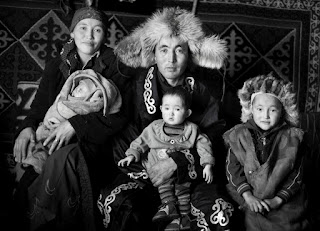 |
| Copyright: Palani Mohan |
This is a piece I did for Postmagazine (South China Morning Post) about one man's suffering for his art. Please view these images through the prism of what it took to capture them. You can also view his bestselling book Vivid Hong Kong, all shot on an iPhone, here: http://www.palanimohan.com/index.php#mi=2&pt=1&pi=10000&s=0&p=3&a=0&at=0
“There are three things a real man should have: a fast horse, a hound, and a golden eagle,” according to an ancient Kazakh proverb. Photographer Palani Mohan had a slow jeep, a malfunctioning camera and a golden vision of capturing one of the world’s most unique relationships between man and beast in a way never seen before.
 With the depths of unforgiving winter approaching, in temperatures that plummeted to below 35 degrees Celsius at night, Mohan made his way across the Mongolian steppe to the far-flung western border region of Olgii, where the last of Mongolia’s Kazakh nomads still hunt the corsac fox using golden eagles.
With the depths of unforgiving winter approaching, in temperatures that plummeted to below 35 degrees Celsius at night, Mohan made his way across the Mongolian steppe to the far-flung western border region of Olgii, where the last of Mongolia’s Kazakh nomads still hunt the corsac fox using golden eagles.He would not be the first or last photographer to go in search of these frost-bitten hardmen, with their wise, lined faces, fox-fur hats and fearsome winged hunting machines mounted upon gloved arms. But in this series of black and white portraits, which largely eschew the action of the hunt in favour of exploring the bond that builds between hunter and raptor, one cannot help but be transfixed by the unique and arresting images obtained. The posed formality of the portraits lends an incongruity that adds to their otherworldly quality.
“This was without a doubt the biggest challenge and the most intense place I’ve ever faced as a photographer,’’ the Australian-born, Hong Kong-based Mohan says. “There is a festival once a year in summer where these guys bring their birds and pose with tourists but I wanted to really spend time with them, live with them in winter. That’s when they hunt because that’s when the fox has its thick winter coat and its reddish fur can be spotted easily by the eagles against the snow cover.’’
Olgii is at the intersection of Russia, China, Mongolia and Kazakhstan. Kazakh nomads have roamed the steppe since the days of Genghis Khan and their ability to hunt with eagles was remarked upon by Marco Polo. The advance of the Russian empire into Kazakhstan two centuries ago swelled their ranks, and when the modern borders were drawn, the Kazakhs found themselves cut off from their homeland and left with little choice but to settle on the arid, wind-scoured plains and foothills of the Altai mountain range of western Mongolia.
 |
| COPYRIGHT: PALANI MOHAN |
At night, he slept in the hunters’ crude stone homes, on a bed of planks under stinking yak pelts while yak dung burned in the fireplace, drying horsemeat festooned the rafters and hooded eagles stood frozen on their perches. “They keep the birds hooded when they’re not hunting,’’ he explains. “Otherwise, their instincts are so fine-honed that they will attack anything that moves. In one house, an eagle’s hood fell off, and it attacked and killed the family cat before anyone even realized what had happened.’’
 |
| COPYRIGHT: PALANI MOHAN |
It was the bond between hunter and eagle that fascinated the photographer. “They all had stories about how they loved their birds more than their wives. There’s even a proverb that if a hunter’s father dies on the day the snow starts to fall, the hunter won’t be at the funeral because he’ll be up in the hills with his eagle. They trap the birds when they are still young and just learning to hunt using nets and meat for bait. And they let them go back into the wild after ten or fifteen hunting seasons, because they feel the bird has done its job and earned its freedom.’’
 |
| COPYRIGHT: PALANI MOHAN |
It was Oraz Khan with whom Mohan felt the closest bond, as the stout but wizened sage shared his wisdom over fireside chats and horsemeat meals. Losing one’s sight after a lifetime of profiting from the sharpest eyes on the planet might seem like some great karmic payback or cosmic joke, but the hunter was in good humour and had no regrets.
“The golden eagle is like no other bird,’’ Khan told him. “They want to be with you. They love you. And they love to kill for you. When the time comes to let them go, it’s the hardest thing a man can ever do.’’







